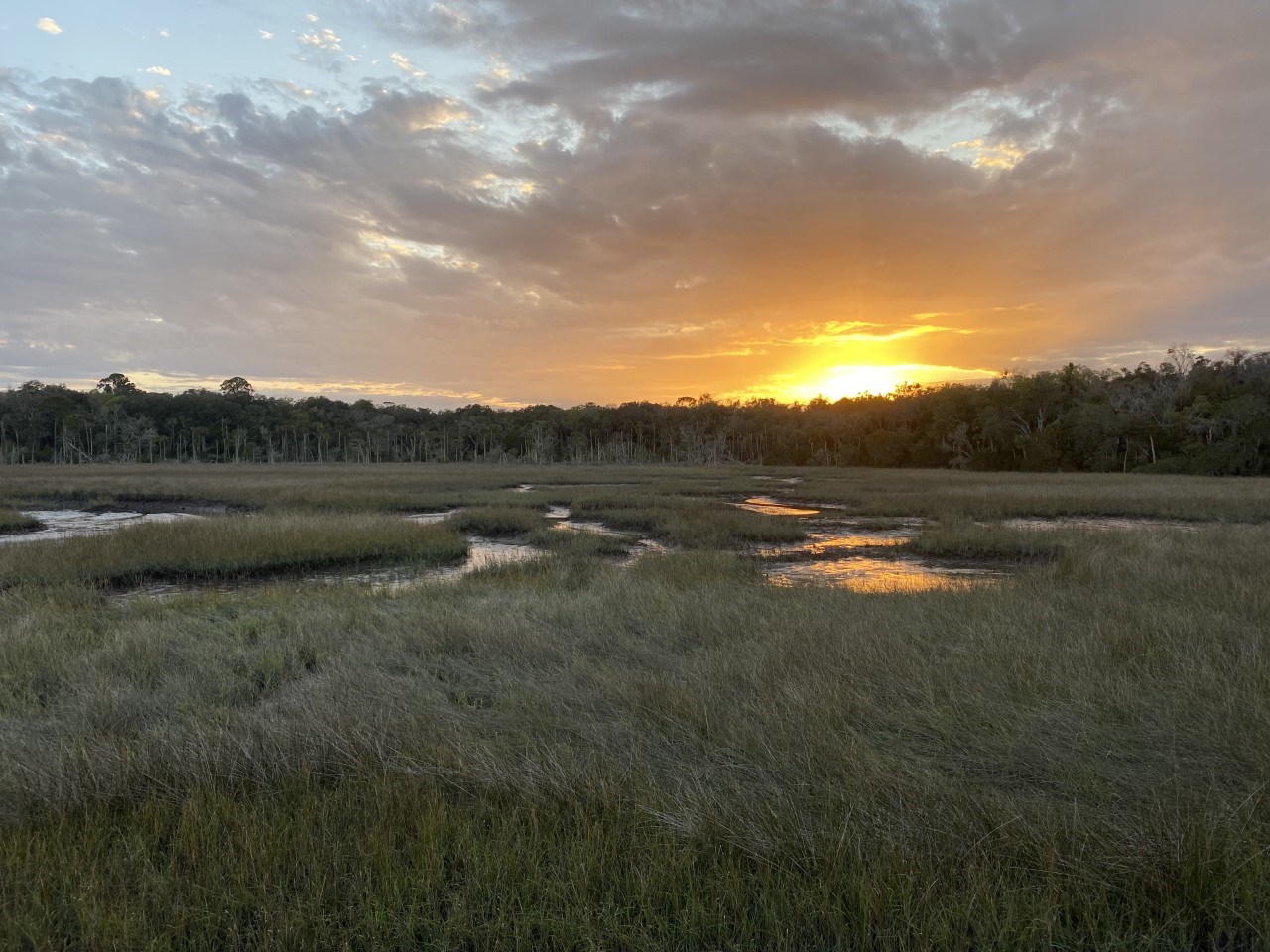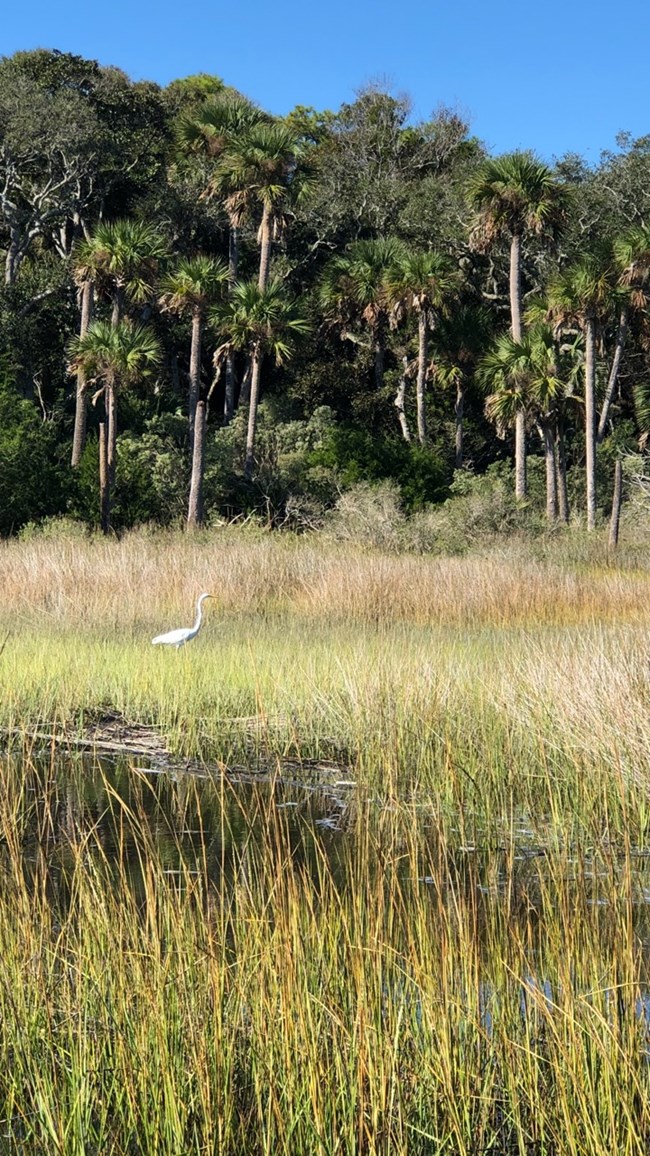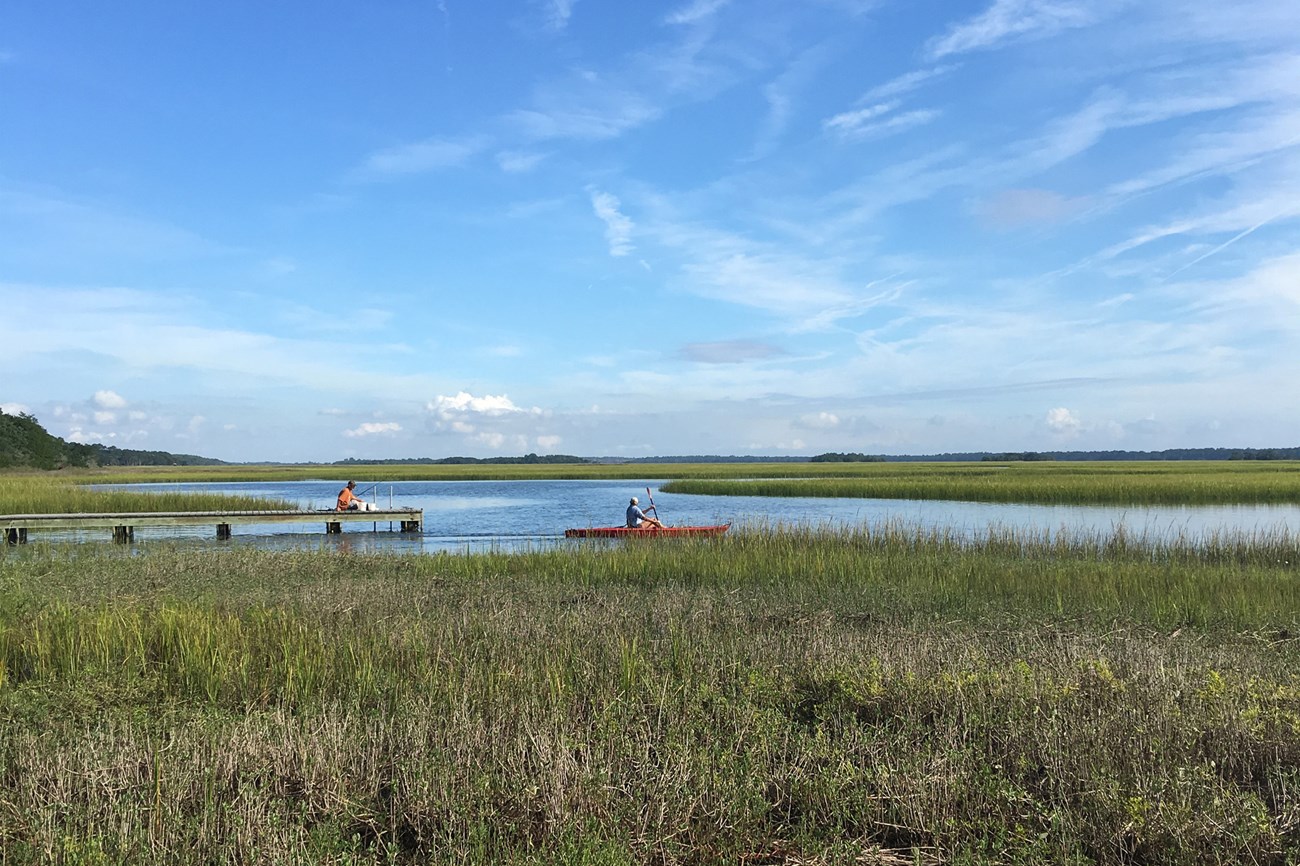
NPS Photo/F. Southwell Unspoiled Wetlands Salt marsh, a type of coastal wetland, makes up about 75% of Timucuan Preserve, but both rich history and a complex amalgamation of lifeforms make up the essence of the salt marsh. Timucuan Preserve is home to some of the last remaining unspoiled coastal wetlands on the east coast, and their bounty has supported human life for thousands of years. The majority of Timucuan is dominated by salt marsh, making it hard to think about the preserve without picturing vast expanses of seagrasses and the distinct smell of brackish water, decomposing plants, and a hint of rotten egg smell produced by bacteria at low tide. 
NPS Photo/C. Fenner It’s Alive! The salt marsh is very much alive, with the tide acting as its heartbeat, bringing water, nutrients, and microscopic plants and animals in with high tide, and flushing out waste when the water goes out at low tide. Salt marshes are regularly flooded with salt water, leaving room for only the hardiest plants and animals to thrive there. Flora and fauna must come equipped with special adaptations to live in salty conditions with low oxygen, or they will not be able to survive in the salt marsh. Salt-tolerant plants that do possess these adaptations are called halophytes. The most common seagrass found in a salt marsh is Smooth cordgrass, or Spartina alterniflora. As cordgrass absorbs water through its roots, a special membrane filters it, keeping most of the salt out. A gland on the leaves collects extra salt that gets excreted through special pores. In the high marsh, where salt water only floods the marsh during the highest tides, Smooth cordgrass and Black needlerush (Juncus roemerianus) live beside each other, forming a patchy mosaic. Sea Life Safe Haven Seagrasses and animals like oysters and snails are full time residents, while some animals, like raccoons, are only part-time visitors, searching for food when the tide is low, but salt marshes are incredibly important to the survival of an abundance of species. Salt marshes are a common habitat in estuaries, or areas where salt and fresh water meet, creating a mix called brackish water. Estuaries function as nurseries for young marine life, providing a refuge for these creatures to mature in, and they provide shelter and food for over 75% of marine fisheries species. This makes salt marshes especially important for seafood lovers and the economy, as multiple industries rely on the health of marine fisheries for success. Glimpse of the Past in a Recreational Refuge Salt marshes also provide some of the best recreational opportunities for fishing, kayaking, and paddleboarding. They can simply be enjoyed for the astounding views they provide at sunrise and sunset, the wildlife viewing opportunities they present, and imagining what old Florida may have been like when viewed through the eyes of a Timucuan searching for food, which would have been abundant in the salt marsh. When viewing Round Marsh with the naval base at your back, you are almost certainly sharing a similar sight to those experienced by native people that thrived in the area around 500 years ago. Protection for All As if the salt marsh doesn’t do enough for humans and wildlife already, we have it to thank for protecting shorelines from erosion, filtering runoff to protect water quality, absorbing excess water to prevent flooding, and for acting as a buffer between the shore and wave action produced by storms. The salt marsh acts as a physical line of defense for humans that live up and down the coastline. Luckily, roughly 35,000 acres of salt marsh fall within the preserve, so we can return the favor by protecting this superhero of an ecosystem. 
NPS Photo |
Last updated: June 9, 2020
